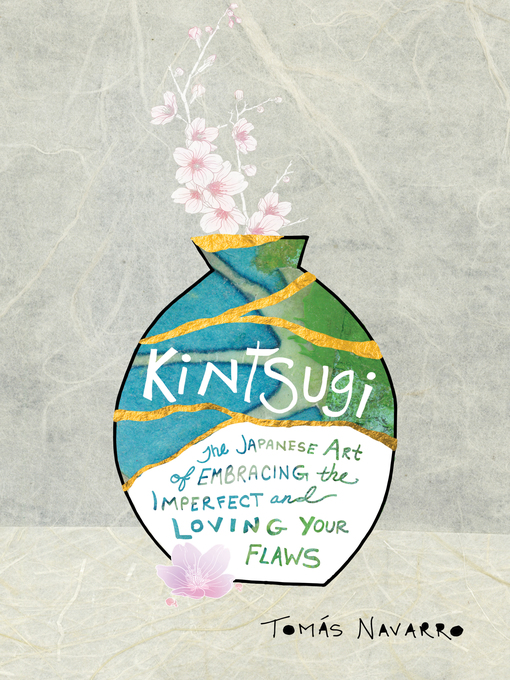"Kintsugi, which translates as 'golden joinery,' is the latest lifestyle trend promising to transform our lives." —the Telegraph
Cultivate inner strength and rebuild your life with the ancient principles of kintsugi.
When we lose a person we love, a job, or our health, it can feel like a precious piece of ourselves falling to the ground and shattering. But in the Japanese art of kintsugi, that's where the creation of beauty begins—in the delicate re-joining and mending of shards with loving attention. Psychologist Tomás Navarro encourages us to approach our lives in the same way.
Everyone faces suffering, but how we engage with our troubles and heal our emotional wounds can make all the difference. Rather than conceal our repairs, what if we embraced them—and looked to them as proofs of our strength?
With Kintsugi, Navarro presents a sensitive and contemplative approach to the suffering that he's seen in his professional practice and in his own life. His reflections help us to engage with our tragedies and challenges—transmuting them into sources of strength. Through gentle stories, practices, and insights, readers gain deeper perspective and courage in the face of life's inevitable crises, heartbreaks, and losses.
-
Creators
-
Publisher
-
Release date
November 5, 2019 -
Formats
-
Kindle Book
-
OverDrive Read
- ISBN: 9781683643692
-
EPUB ebook
- ISBN: 9781683643692
- File size: 574 KB
-
-
Languages
- English
-
Reviews
-
Publisher's Weekly
September 9, 2019
Psychologist Navarro uses kintsugi, the Japanese art of honoring the beauty in broken pottery by fusing the pieces back together, as a metaphor for personal healing in his approachable debut. Kintsugi, Navarro writes, recognizes the “fragility, strength, and beauty” in the repaired object, and Navarro has found its basic principles of close analysis, detailed planning, and patient rebuilding to be helpful tools for his patients to process and move beyond trauma. With lively prose and many creative analogies (such as the body being like a “sleeping giant,” having “everything you need to repair a wound,” though one’s body “won’t set the process in motion until you need it”), Navarro eases the way through the many questions that structure each section. Weaving in professional and personal anecdotes, he considers “repairing” from job loss, low self-esteem, the loss of love, and the loss of “hope and joy.” For each situation he offers advice based on freeing one’s judgment from guilt and shame, learning from what happened, and dissociating the negative experience from one’s self-image. Readers “focused on building a new reality” after trauma will be interested in Navarro’s constructive kintsugi analogy and many examples of healing taken from his practice. -
Library Journal
October 1, 2019
In the wake of Meik Wiking's widely popular Little Book of Hygge comes this latest from Hong (The Birth of Korean Cool), who asserts that the Korean concept of nunchi is not just a quaint custom but a subtle art of gauging other people's thoughts and feelings to build harmony, trust, and cooperation. The author refers to this skill as a superpower, a form of emotional intelligence that enables one to "read" quickly a room or situation and respond appropriately. Hong instructs readers how to develop nunchi and use it to improve their everyday life. One intriguing rule is "never pass up a good opportunity to shut up," advice that can serve everyone well.In contrast, psychologist Navarro considers the Japanese art of kintsugi, which focuses on tending to what is broken while making reconstruction highly visible. While the term kintsugi actually refers to the repairing of objects, Navarro applies it to healing one's own broken pieces with loving attention and kindness. Navarro suggests that we can face adversity head-on by first picking up the pieces, analyzing what happened, connecting with our emotional strength, and restoring what was taken apart. Navarro offers specifics for healing after job loss, raising low self-esteem, and finding hope, then segues into mottainai, giving oneself a new opportunity. VERDICT These two books give readers the chance to incorporate principles into their daily lives that will help them see through many everyday challenges.
Copyright 2019 Library Journal, LLC Used with permission.
-
Formats
- Kindle Book
- OverDrive Read
- EPUB ebook
subjects
Languages
- English
Loading
Why is availability limited?
×Availability can change throughout the month based on the library's budget. You can still place a hold on the title, and your hold will be automatically filled as soon as the title is available again.
The Kindle Book format for this title is not supported on:
×Read-along ebook
×The OverDrive Read format of this ebook has professional narration that plays while you read in your browser. Learn more here.


